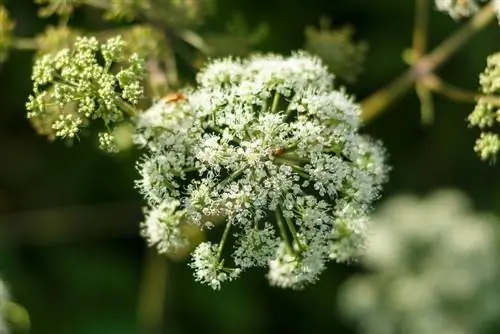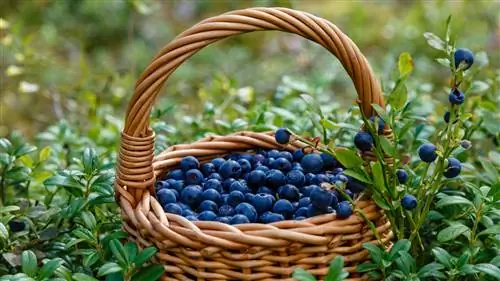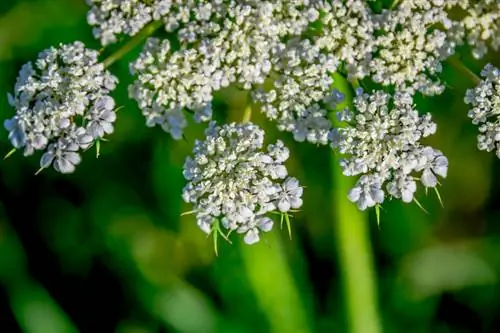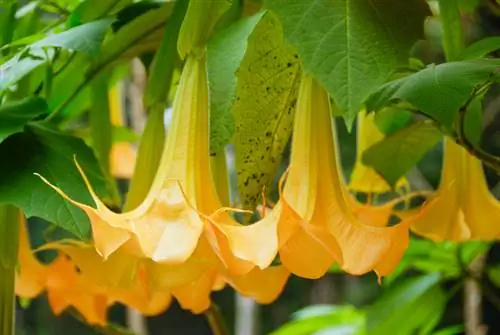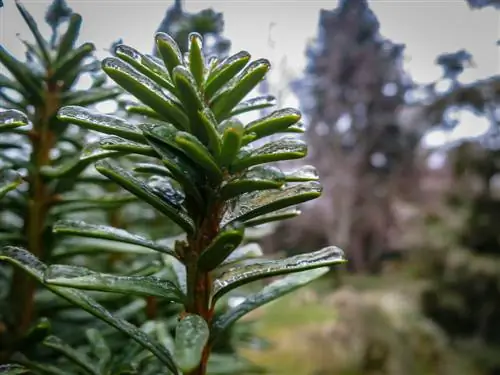- Author admin [email protected].
- Public 2023-12-16 16:46.
- Last modified 2025-01-23 11:22.
The hemlock cup, which was used for execution with its poisonous potion, is probably familiar to everyone. The spotted hemlock is a species native to Germany. Poisoning is possible due to confusion with edible wild plants.
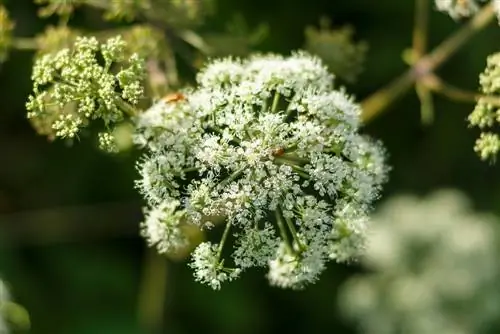
What is special about the hemlock root?
The root of the spotted hemlock is spindle-shaped and whitish and is used by the plant to survive the winter and to anchor itself in the ground. It is one of the most poisonous wild plants in Germany, so special caution is required.
How hemlock grows
The spotted hemlock is a biennial plant that survives the first winter with its spindle-shaped and whitish roots. With the help of the seeds, the umbelliferous plant spreads quickly.
Occurrences
The species grows wild on ruderal areas such as fallow land and rubble sites or roadsides. Arable fields and beet fields are typical habitats, although many farmers have eliminated the herb from their crops because of its toxicity. These areas offer the plant optimal conditions because it values deep soils with a high clay content. As a nitrogen indicator, it grows where many nutrients are available.
Poisonous effects
This species is one of the most poisonous wild plants in Germany. The active ingredient coniine is responsible for the highly toxic effect. A dose between 0.5 and 1.0 grams is fatal for an adult. The highest concentration of poison is in the unripe and notched split fruits with the two-part style pad.
Symptoms
The poison mainly develops its effect in the nervous system. In the first stage, burning and stinging feelings occur in the mouth and throat. This is followed by nausea and visual disturbances. As the disease progresses, the muscles develop cramps and paralysis. The ability to speak and swallow decreases until a fatal respiratory arrest occurs when completely conscious.
Identifying hemlock
Poisoning occurs due to confusion between different meadow herbs, as Conium maculatum has non-poisonous counterparts including meadow chervil and wild carrot. For the layperson, the plant is easily confused with parsley. In addition to the growth characteristics, there are some typical characteristics that clearly distinguish the poisonous umbelliferous plant from similar-looking relatives.
Pay attention to this combination of features:
- Plant smells strongly of mouse urine
- Stem has red spots in the lower part
- Shoots are bare, hollow and longitudinally ribbed
- blue frost is reminiscent of frost on ripe plums
Cultivation in the garden
The plant is not considered endangered in Germany and is on the warning list in Berlin. Some specialist nurseries and seed retailers offer spotted hemlock for planting or sowing in garden beds. Nothing stands in the way of cultivation as long as the outdoor area is not used by children or agricultural pastures adjoin the property. Here the herbaceous plant can quickly sow itself.
Claims
Sowing is possible in autumn, because then the seeds benefit from the cold and germinate next spring. The umbelliferous plant thrives without problems on a normal substrate with moist, nutritious and calcareous conditions. Once settled in a sunny location, the perennial does not require any further attention. If you remove the wilted inflorescence before the fruit ripens, you will prevent self-seeding.

